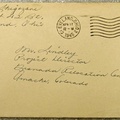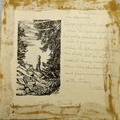Read Part 2 >>
The Lasting Effects of the Camps
The camps are important not just because they are a week of enjoyment, but the impact from the week carries over for the rest of the campers lives. The newly formed friendships serve as the core to the legacy of the camp community.
Since the camps are aligned with the Japanese American churches—which are the historic centers of the Japanese American community—the camps directly affect the next generation of Japanese Americans. It is important to stress that even after the week of a youth camp is over, the newly created friendships persist.
Of the 106 campers that attended Asian Camp in 2005, 58 returned in 2006. If we disregard the 18 college-aged campers in 2005 that were too old to be a camper in 2006, we can calculate that roughly 66% of the campers returned. Since two-thirds of the campers that were able to return did, they are also able to renew and build on previously established relationships. For the one-third of campers that are new, they can continue the camps’ legacy of creating community networks by following the examples all around them. In other words, the majority of campers have enjoyed their experiences enough to continue to attend camp, year after year, until they are too old to be campers.
Once an individual is too old for a camp, they are welcome to take on a leadership position. Similar to being a camper, one does not have to be Japanese American or a baptized Christian to counsel, but they do have to be willing to dedicate roughly half of a year to counselor training sessions.
At these training sessions, which are led by the camp directors, the counselors learn leadership methods, discuss the themes of the camp, plan the programs, and bond with each other throughout the entire process. By the time camps start in the summer, most of the counselors are already good friends with each other, and these friendships serve as examples for the campers.
The youths that attend the Japanese American Christian church camps consider the counselors as role models. Many campers have mentioned how they looked up to and followed the examples of their counselors. Thus, when the youths are too old to be campers, several of them choose to emulate their role models and become leaders for the next generation of Japanese American youths.
This creates a cycle of leadership to ensure the success and survival of the camps. There is no upper age limit of counselors, but generally, the Junior High Camp counselors are older high school students, while the Asian camp counselors range from college sophomores to individuals in their late twenties.
Despite multiple generations of assimilation and acculturation into American society, Japanese American youths persist in identifying themselves as part of the Japanese American community. However, the defining points of Japanese American history—most notably the Internment experience—are slowly fading out of the consciousness of Japanese American youths.
The results of this study reaffirm the real effects of racial formation on the psyche of today’s Japanese American youths who are often racialized by the dominant white American society. Furthermore, they are often “othered” by first- or second-generation Asian American youths for lacking language skills and other cultural markers common to most Asian immigrant groups.
Finally, this study illustrates the inherent human desire to discover one’s own community as based on commonality as opposed to difference, not just as a form of resistance against racialization, but as a form of individual empowerment through group membership. When Japanese American youths can realize that are part of a community and understand their shared past, they can better decide a direction for the future.
Conclusion
This study has examined today’s Japanese American Christian youth camps in an effort raise consciousness of today’s fourth- and fifth-generation Japanese American youths, and to maintain hope that this historically significant community will continue to embrace Christian youth camps as a physical space for community building for future generations of Japanese Americans.
In understanding this model for the future, it is also important to return to the starting point of this phenomena: the Young People’s Christian Conference. Although the actual YPCC has been defunct for decades, its remaining participants—who are now senior citizens—refuse to let its legacy fade away. Each summer, these Japanese American Christian senior citizens from different churches congregate at the annual Japanese Fellowship at the Zephyr Point Conference Center for a weeklong retreat of fellowship and spiritual growth. As they continue to make these community-building camp experiences a priority in their old age, they continue to benefit from the legacy of Japanese American Christian youth camps.
Japanese American Christian youth camps have positively affected thousands of Japanese Americans over multiple generations in the United States. Essentially, these camps created a cycle of bringing together a critical mass of Japanese Americans, putting them in an isolated environment for them to grow as a community, and sending them back to their respective geographic locations as empowered individuals with a new understanding of their identity.
In this somewhat ironic twist, at this most basic description, these Japanese American Christian youth camps parallel the Internment experience of group displacement and subsequent community growth. While this study in no way attempts to compare voluntary summer camp participation with the forced incarceration of Japanese Americans during World War II, I bring this point up to illustrate the “ties that bind” any community together.
Due to the demographic shifts after four, five, and even six generations in the United States, the Japanese American community has evolved into one based less on physical proximity but more on maintaining personal connections in spite of it. Is this continuous cycle of coming together and dispersing, to borrow Reverend Michael Yoshii’s (another former camper-turned-minister) phrase, “a collective Japanese American experience transferred in time?”
The findings from this study illustrate that despite its extremely diverse nature, Japanese America maintains its own unique cultural traditions that are specific to their lives and histories in the United States. Japanese American Christian youth camps are one such example of a specifically Japanese American tradition that has adapted over the years to the changing face of Japanese America.
Today, it is the responsibility of the next generation of Japanese American leaders to ensure that this legacy endures. As Japanese American Christian youth camps continue to thrive, I have faith that the next generation will live up to its responsibilities and continue to redefine what it means to be Japanese American.
© 2011 Dean Adachi





